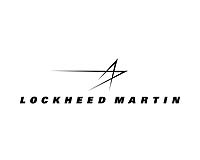| . |  |
. |
Melbourne (UPI) Jul 15, 2009 Global artificial intelligence companies will battle it out in Australia's outback to be one of the winners of a competition to design next-generation combat robots. Judges for the Australian-led competition will chose five companies to be given hundreds of thousands of dollars in grant money to further develop their prototypes next year. The Australian government working with the U.S. Army is challenging high-tech businesses to come up the ultimate military machine, a robot for dangerous operations. The remote-controlled robots are needed to help soldiers fight in extremely dangerous and unpredictable urban combat areas, Australian government officials said. The robots will not carry guns but will be "fully autonomous ground vehicle systems," likely tracked-based designs, "that can be deployed effectively in military operations and civilian emergency situations," according to the U.S. Defense Department. Their mission will be more surveillance than combat, and they will seek to detect dangers such as mines, chemical weapons, human movement and also perform complete visual scanning of battle areas. They will be the land equivalent of the increasingly popular remotely piloted and unmanned airplanes, such as the Northrop Grumman RQ-4 Global Hawk now used in combat zones. Less sophisticated versions of the so-called drone planes have civilian applications such as for reconnaissance within extensive forest fire areas. Greg Combet, Australia's minister for defense personnel, materiel and science, launched the million-dollar international competition known the Multi-Autonomous Ground-robotic International Challenge. MAGIC is being organized by Australia's Defense Science & Technology Organization in partnership with the U.S. Department of Defense. "The first five short-listed competitors will each receive research grants of $100,000 to develop their proposals into prototypes," Combet said in a written government statement. To complete the MAGIC challenge the robots must accurately and completely explore and map the challenge area, locate, classify and recognize all simulated threats and, finally, do all this within three and half hours. "After they have successfully demonstrated their prototypes at a location in South Australia next year, the top three finalists will receive research awards of $750,000, $250,000 and $100,000 respectively." The finalists will then present their projects, including detailed engineering plans, at the Land Warfare Conference in Brisbane from Nov. 15-19, 2010. The conference is Australia's major annual event for users, providers, academics, designers and manufacturers to meet and exchange visionary ideas on land systems. The Australian government said that MAGIC is a "unique opportunity to qualify for further funding under the U.S. Joint Concept Technology Demonstrator Program, so that their prototypes can be transitioned into operational capability." If an Australian competitor is among the top three finalists, it would also be considered for funding under the Capability & Technology Demonstrator Program managed by DSTO. The U.S. military already uses a robot, the PackBot series manufactured by iRobot based in Bedford, Mass. PackBots are designed for situational awareness, reconnaissance and explosive ordnance disposal. More than 2,000 PackBots are operational in Iraq and Afghanistan, according to iRobot, maker of the domestic robot Scooba, which scrubs and cleans hard floors. Share This Article With Planet Earth
Related Links The latest in Military Technology for the 21st century at SpaceWar.com
 LockMart Develop Concept For New US Navy Air And Missile Defense Radar
LockMart Develop Concept For New US Navy Air And Missile Defense RadarMoorestown NJ (SPX) Jul 16, 2009 The U.S. Navy has awarded Lockheed Martin a $10 million firm-fixed-price contract to perform concept studies for the Air and Missile Defense Radar (AMDR), a scalable solid-state radar suite for future surface combatants. Comprised of an S-Band radar, an X-Band radar and a Radar Suite Controller (RSC), AMDR is intended to significantly enhance a ship's defensive capability against advanced ... read more |
|
| The content herein, unless otherwise known to be public domain, are Copyright 1995-2009 - SpaceDaily. AFP and UPI Wire Stories are copyright Agence France-Presse and United Press International. ESA Portal Reports are copyright European Space Agency. All NASA sourced material is public domain. Additional copyrights may apply in whole or part to other bona fide parties. Advertising does not imply endorsement,agreement or approval of any opinions, statements or information provided by SpaceDaily on any Web page published or hosted by SpaceDaily. Privacy Statement |